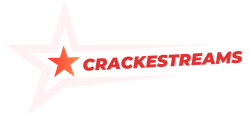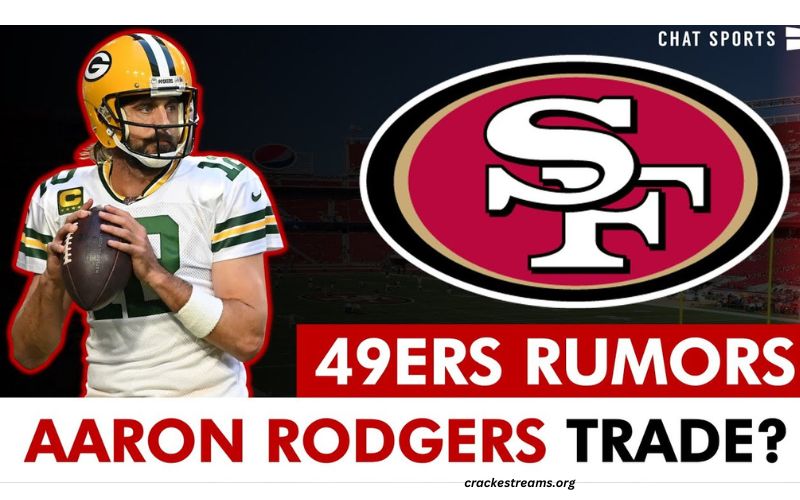In today’s professional world, the concept of Business Casual Men attire has become increasingly prevalent. It offers a middle ground between formal and casual dress, allowing men to look polished and put together while still maintaining a sense of comfort and style. Whether you’re attending a meeting, going to a networking event, or simply navigating the office environment, knowing how to dress business casual can make a significant difference in how you are perceived by your colleagues and superiors. In this article, we will explore the key elements of a business casual wardrobe for men, provide tips on selecting the right clothing items, discuss color and pattern choices, highlight essential accessories, and offer outfit ideas for different professional settings. By the end, you’ll have a comprehensive understanding of how to master the art of dressing business casual.
Understanding the Concept of Business Casual Attire
Before diving into the specifics, it’s important to grasp the concept of business casual attire. Business casual is a dress code that strikes a balance between formal business wear and casual attire. It offers a more relaxed and comfortable alternative to traditional suits, without compromising professionalism. Understanding the nuances of business casual will help you navigate this dress code with confidence.
When dressing in a business casual manner, it’s crucial to maintain a polished and put-together appearance. Opt for clothing that is clean, well-fitted, and in good condition. Avoid anything too casual, such as t-shirts, jeans, or sneakers. Instead, aim for a smart and refined look that exudes professionalism while allowing for a touch of personal style.
Key Elements of a Business Casual Wardrobe for Men
Building a versatile business casual wardrobe starts with investing in key clothing items that form the foundation of your outfits. These staples will ensure that you have a range of options to choose from, allowing you to mix and match pieces effortlessly. Here are some essential elements to consider:
- Blazers and Sport Coats: A well-fitted blazer or sport coat is a must-have in any business casual wardrobe. Opt for neutral colors like navy, gray, or charcoal to maximize versatility. Pair them with dress pants or chinos for a sophisticated yet relaxed look.
- Dress Shirts: Invest in a collection of high-quality dress shirts in various colors and patterns. Crisp white shirts are a timeless classic, but don’t shy away from experimenting with subtle patterns or colors to add depth to your outfits.
- Chinos and Dress Pants: Chinos and dress pants are the backbone of a business casual wardrobe. Choose well-tailored pants in neutral shades like khaki, navy, or gray. These versatile bottoms can be paired with a variety of shirts and blazers for different occasions.
Choosing the Right Clothing Items for a Business Casual Look
When it comes to choosing the right clothing items for a business casual look, there are a few factors to consider. Fit, fabric, and versatility are key aspects to keep in mind for each piece you add to your wardrobe. Let’s delve deeper into these considerations:
- Fit: The fit of your clothing is paramount when it comes to looking polished in a business casual ensemble. Avoid anything too tight or too loose. Aim for a tailored fit that flatters your body shape and accentuates your best features. If needed, consult with a tailor to ensure your clothing fits perfectly.
- Fabric: The choice of fabric can greatly impact the overall look and comfort of your outfit. Opt for high-quality materials that breathe well and drape nicely, such as cotton, linen, or wool blends. Avoid synthetics that may appear cheap or cause discomfort.
- Versatility: Building a versatile wardrobe means selecting pieces that can be easily mixed and matched. Choose clothing items that can be dressed up or down, allowing you to create different looks for various occasions. This will maximize the value and utility of each item in your closet.
By carefully considering fit, fabric, and versatility, you’ll be well on your way to creating a business casual wardrobe that meets your needs and reflects your personal style.
Tips for Selecting the Right Colors and Patterns in Business Casual Outfits
Choosing the right colors and patterns in your business casual outfits can elevate your style and make a lasting impression. Here are some tips to help you navigate color and pattern choices:
- Neutral Colors: When in doubt, opt for neutral colors as the foundation of your outfit. Colors like navy, gray, black, and beige are timeless and versatile, allowing you to create a multitude of looks. They also provide a sophisticated backdrop for incorporating pops of color or patterns.
- Subtle Patterns: While solid colors are a safe choice, don’t be afraid to incorporate subtle patterns into your business casual outfits. Striped or checkered dress shirts, for example, can add visual interest without overpowering your overall look. Just ensure that the patterns are not too bold or distracting.
- Color Coordination: Pay attention to color coordination when putting together your business casual outfits. Choose colors that complement each other and create a harmonious ensemble. For example, pair a navy blazer with khaki chinos and a light blue dress shirt for a cohesive and polished look.
By following these tips, you can create stylish and well-coordinated business casual outfits that make a positive impression in any professional setting.
Essential Accessories to Complete a Business Casual Men Ensemble
Accessories are the finishing touches that can elevate your business casual ensemble from ordinary to exceptional. Here are some essential accessories to consider:
- Ties: While ties are not always necessary for a business casual look, they can add a touch of sophistication when appropriate. Opt for ties in classic patterns and colors, such as solid, striped, or polka dot designs. Remember to choose a tie that complements the rest of your outfit.
- Belts: A well-chosen belt can tie your entire outfit together. Opt for leather belts in classic colors like black or brown. Ensure that the belt matches your shoes for a polished and cohesive look.
- Watches: A stylish watch not only serves a practical purpose but also adds a touch of elegance to your business casual attire. Choose a watch that suits your personal style and complements the overall aesthetic of your outfit.
- Shoes: The right pair of shoes can make or break a business casual look. Opt for leather dress shoes in classic styles like oxfords or loafers. Ensure that your shoes are clean, polished, and in good condition to maintain a professional appearance.
By paying attention to these essential accessories, you can add the perfect finishing touches to your business casual ensemble.
Common Mistakes to Avoid When Dressing Business Casual Men
While learning how to dress business casual is essential, it’s equally important to be aware of common mistakes that should be avoided. Here are some pitfalls to steer clear of:
- Being Too Casual: One of the most common mistakes is dressing too casually for a business casual setting. Avoid wearing jeans, t-shirts, or sneakers, as they are too informal for this dress code. Dress in a way that respects the professional environment you are in.
- Being Too Formal: On the flip side, being too formal can also be a misstep. Overdressing in a full suit and tie when everyone else is dressed business casually can make you appear out of touch or excessively formal. Adapt your outfit to the occasion and the dress code expected.
- Neglecting Grooming: Even in a business casual setting, grooming is essential. Ensure that your hair is well-groomed, your nails are trimmed, and your overall appearance is tidy. Neglecting personal grooming can undermine an otherwise well-put-together outfit.
By avoiding these common mistakes, you can navigate the business casual dress code with confidence and present yourself in the best possible light.
Dressing Business Casual in Different Professional Settings
The appropriate business casual attire can vary depending on the professional setting you find yourself in. Here’s a breakdown of how to dress business casual in different environments:
- Office Setting: In a traditional office setting, opt for a well-fitted blazer or sport coat, paired with dress pants or chinos. Choose a dress shirt or a tailored sweater to complete the look. Remember to keep your overall appearance polished and professional.
- Creative or Tech Industry: In a more creative or tech-focused industry, the business casual dress code may be more relaxed. You can experiment with more casual elements, such as a well-fitted polo shirt or a tailored button-down shirt paired with dark jeans or chinos. However, always ensure that your outfit remains polished and professional.
- Client Meetings or Networking Events: When attending client meetings or networking events, it’s essential to dress slightly more formal while still maintaining a business casual look. Opt for a well-tailored suit without a tie, or a blazer paired with dress trousers and a crisp button-down shirt. This will ensure that you make a positive impression while remaining approachable.
By adapting your business casual attire to different professional settings, you can navigate each environment with ease and professionalism.
Business Casual Outfit Ideas for Men
To help you visualize the possibilities of business casual attire, here are some outfit ideas to inspire your own ensembles:
- Classic Business Casual: Pair a navy blazer with khaki chinos, a light blue dress shirt, and brown oxford shoes. Complete the look with a brown leather belt and a stylish watch.
- Smart Casual: Opt for a gray sport coat, a white dress shirt, dark jeans, and brown loafers. Add a touch of personality with a patterned pocket square and a sleek leather briefcase.
- Creative Business Casual: Experiment with a tailored polo shirt in a bold color, paired with dark chinos and clean white sneakers. Accessorize with a leather bracelet and a backpack for a more casual yet polished look.
Remember, these outfit ideas are just starting points. Feel free to mix and match different clothing items, colors, and patterns to create your own unique business casual looks.
How to Transition from a Formal to a Business Casual Look
Transitioning from a formal to a business casual look can be easily accomplished with a few simple adjustments. Here’s how to make the switch seamlessly:
- Remove the Tie: If you’re wearing a formal suit, removing the tie instantly transforms your outfit into a more business casual look. Leave the top button of your dress shirt open for a relaxed yet professional appearance.
- Swap the Suit Jacket: Exchange your suit jacket for a blazer or a sport coat to achieve a more business casual aesthetic. Ensure that the blazer fits well and complements the rest of your outfit.
- Opt for Chinos or Dress Pants: Replace your formal suit trousers with well-fitted chinos or dress pants. This will instantly create a more relaxed and comfortable look while maintaining professionalism.
By incorporating these simple adjustments, you can seamlessly transition from a formal to a business casual look, allowing you to adapt to different occasions effortlessly.
Conclusion
Mastering the art of dressing business casual is a valuable skill that can enhance your professional image and boost your confidence. By understanding the concept of business casual attire, investing in key wardrobe staples, selecting the right clothing items, paying attention to color and pattern choices, incorporating essential accessories, and avoiding common mistakes, you can navigate the business casual dress code with ease. Remember to adapt your attire to different professional settings, experiment with outfit ideas, and smoothly transition from formal to business casual looks when needed. With these insights and tips, you’ll be well-equipped to showcase your personal style while maintaining professionalism in any business casual environment.




